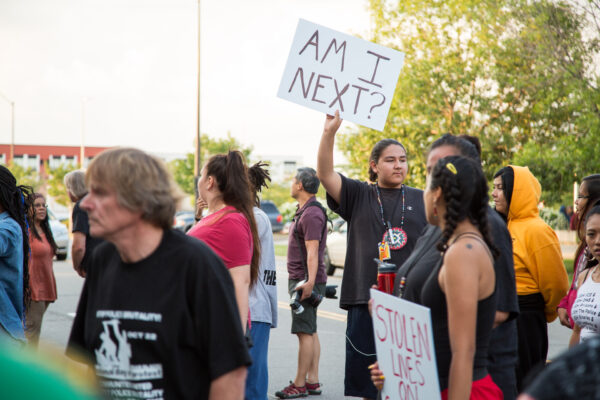Forty percent of people in America live in a household with a gun. Minnesota law enforcement needs to update their policies, training, and tactics if they intend to police an increasingly armed society.
When police encountered Thurman Blevins on June 23, 2018—they didn’t see a friend, family member, or neighbor. They saw a “drunk Black man with a gun.” And they shot him.
Police officers do not decide guilt or innocence—that is the job of our courts. Their job is to respond to calls, enforce laws, and make arrests. But Minneapolis police did not even attempt to investigate when they approached Blevins. They rushed out of their patrol car, guns raised, yelling “I will fucking shoot you.”
In 40 seconds, Blevins was dead.
We live in an incredibly armed society, where 30% of our population are gun owners, and 42% live in a household with a gun. Altogether those gun owners own over 350 million guns.
This means police could be encountering an individual with a weapon up to 42% of the time they are interacting with a member of the public. Police need to be trained on how to effectively deescalate and take proper safety precautions when dealing with people who are armed.
Minnesota law allows people to carry a concealed weapon in public, so when a police officer encounters an individual with a gun, that doesn’t mean they get to shoot. The Department of Justice, along with many other police departments advocate slowing down and de-escalating the situation first, even if a weapon is involved.
In the last three police shootings in the Twin Cities, Thurman Blevins, Archer Amorosi, and most recently William “Billy” Hughes, all reportedly were armed with weapons of some sort.
Nobody wants police officers or bystanders to be harmed. There are training methods that prioritize everyone’s safety that include de-escalation. In other police departments, officers are trained to hold their fire, especially when encountering people experiencing mental illness or wielding knives. According to a report in the New York Times, the Camden, New Jersey police department tells its officers “this sometimes requires backing up to a safer distance. Or relying on patience rather than anything on an officer’s gun belt.”
It is possible for armed suspects to be arrested without being killed—we have seen it multiples times with white mass shooters or in situations with people carrying openly after committing a crime. However, when encountering people of color or people experiencing a mental health crisis, there are many instances of police shooting before even attempting to de-escalate the situation. That was the case when two Minneapolis police officers chased and shot Thurman Blevins. When best practices and protocol breakdown, and police default to escalation and use of force, marginalized and vulnerable communities are disproportionately harmed.
Police have many tools in their toolbox—including the ability to detain, question, or even arrest somebody if they are threatening anyone with a firearm. They can also bring along medical professionals to assist in mental health crises, or establish a safety perimeter.
Police should not be given the power to act as judge, jury, and executioner. Considering that we don’t even have the death penalty in Minnesota, that is a dangerous amount of power for any one individual to wield—and it undermines the checks and balances that underpin our democracy.
It is a tragedy every single time the police kill a member of our community. It happens far too often, and the mere presence of a weapon is not a reason in and of itself for someone to be killed. Minnesota police departments need to update their policies, training, and protocol—and they need to hold their officers to them. With over 350 million guns circulating in this country, if the police can’t figure out how to keep people safe without defaulting to deadly use of force, we will be stuck in this endless cycle of grieving.
[Photo Credit: Flickr/Emma Fiala CC BY-SA 2.0]

